This delicious dessert is made from fruits you can easily forage while out on a walk, hence the name Hedgerow Crumble! Find out how to make it below.
Foraged fruits
I am addicted to finding food for free. Foraging is a great way of being frugal and connecting with nature! I love having to be patient and wait for my favourite ingredients to come into season. Then seeking out the best spots to collect them and then walking home with a bag full of nature's finest produce.
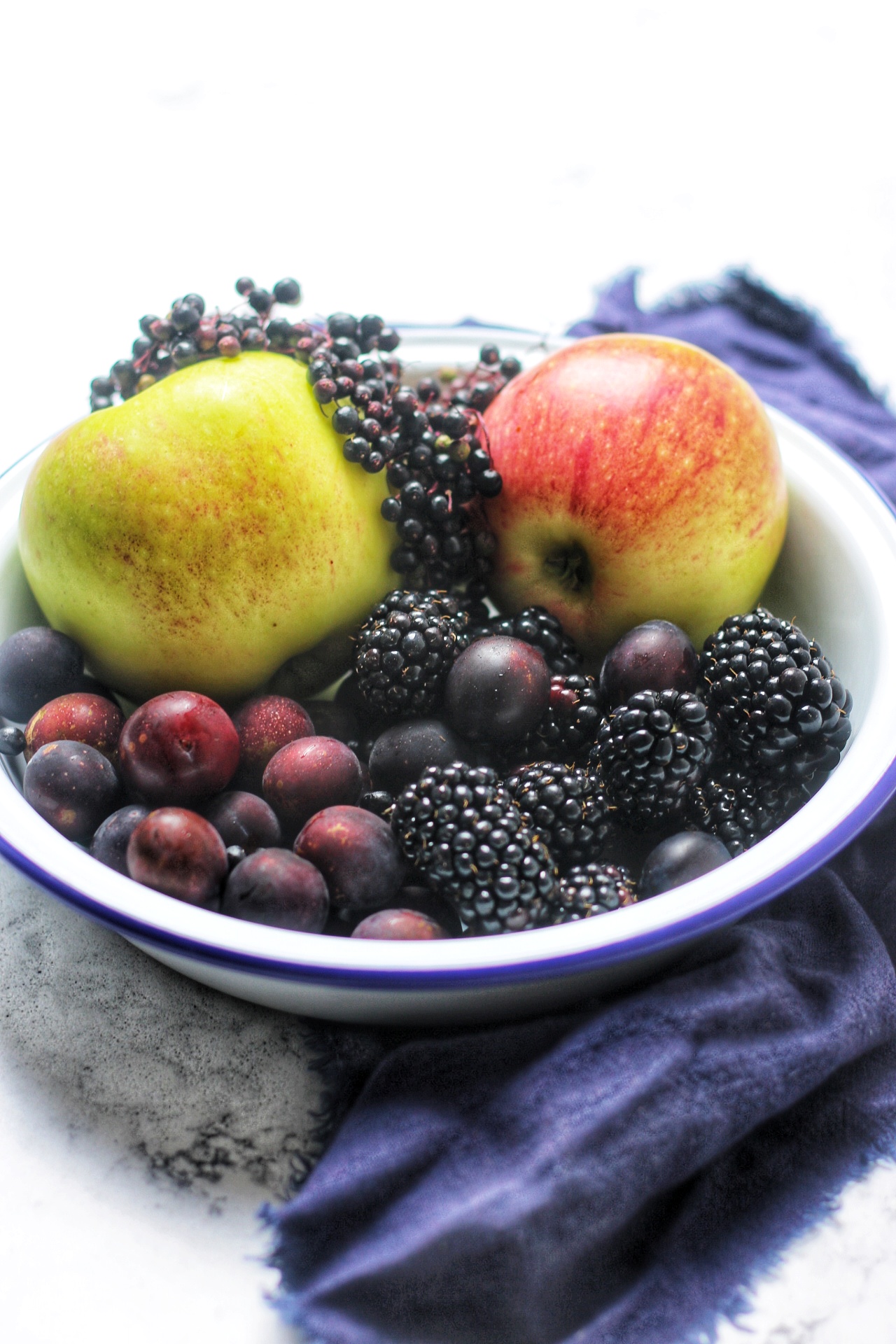
Elderberries
The first ingredient I collected for my Hedgerow Crumble was elderberry. I have been foraging for elderflowers for years. And, I was thrilled this year when I found a huge patch that no one knew about. The reason I kept it a secret is because when the elderflowers aren't picked there is a bumper crop of elderberries. I picked just enough to make a bottle of Elderberry Cordial to see me through the winter months. I then kept a couple of bunches of elderberries to add to this delicious crumble.
In my Elderberry Cordial post, talk at length about how to recognise elderberries and their health benefits. In short they are large clusters of dark purple (almost black) juicy berries. It's hard to get them confused with anything else. If you know how to spot elderflowers then just return to the same spot at the end of August and you'll find the berries.
It's best to avoid eating them raw (some varieties are toxic if not cooked). But they add a lovely, sweet syrupy flavour to this crumble.
Sloes, Bullace and Damson
It seems no one can agree on which came first. Some botanists believe that all plums, damsons, bullaces, and greengages are developed from the sloe. Now I'm no botanist but I do know that I have a tree in a park near me that is probably a bullace tree but may also be damsons or sloes! Sloes are the smallest of the three and damsons are the biggest. Sloes are also the most sour/astringent and damsons the sweetest. Bullaces are somewhere in between.
They all have a beautiful blue / dark purple skin with a big stone inside. This stone is encased in a green coloured flesh. Damson trees are free from thorns. Bullaces on the other hand have thorns making them a little more painful to pick but just as delicious. Sloes are bushes rather than trees so if you've found your blue/purple berries in hedgerows rather than in trees it's likely you've got sloes.
If you think you've got sloes or bullaces, add an extra 1 - 2 tablespoon of sugar in with the fruit before you bake the Hedgerow Crumble. Damsons won't need any extra sweetener.
Blackberries
The humble blackberry is probably the most foraged fruit in Britain. It's certainly how I got the foraging bug: I've been picking them in hedgerows since I was a small child. I have fond memories of late-summer evening walks with my dad and a Tupperware or two. We'd collect as many blackberries as we could carry. Blackberries grow pretty much everywhere: in woodland, hedgerows, along railway embankments, waste ground and in gardens. It can pretty much grow everywhere!
When picking blackberries be wary of the thorns. After a lovely walk picking these juicy berries this weekend my arms are now covered in scratches! It's a good thing I don't mind.
One of the most important rules of foraging is that you should only ever pick what you need. I know it's tempting to pick lots if there is a bumper crop. But, it really is important to leave at least as much as you pick, ideally more. Blackberries in particular are very important for our wildlife. Insects, birds and small mammals all rely on this plant so be kind and leave plenty behind.
Apples
It's more rare to find apples out in the "wild" but it is possible! If you're lucky enough to have an apple tree in a park or street then you've got free apples! If you have neighbours who have an apple tree the likelihood is they will have more than they can eat. Be brave and ask if you can help gather them. I have two small apple trees so I know how hard it is to keep on top of windfalls. They will no doubt be grateful for your help.
Of course if you don't have your own apple tree or know of one in your local area this might be the one ingredient you need to buy. Don't worry, I won't tell! Crab apples do grow in the wild but they are quite sharp. So, I'd recommend buying apples rather than using these in this particular dish.
You don't need a lot of apples for this recipe. I use them because they provide more structure to the crumble fruit filling then the berries do. They are also a good carrier for the flavour of the elderberries, damsons and blackberries.
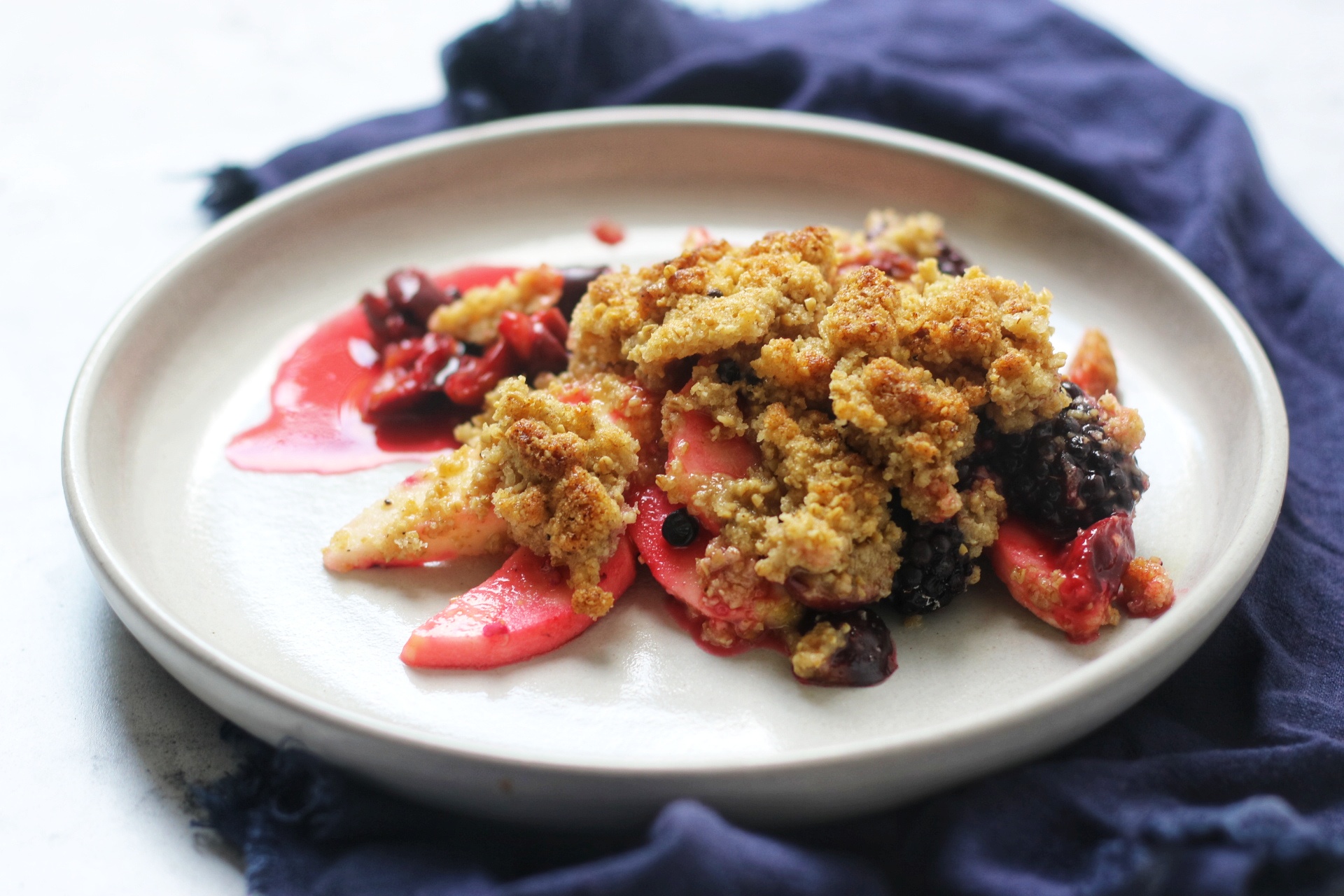
Can I use any other fruit?
There are lots of different berries that grow in our hedgerows. Depending on the time of year you're baking this crumble, you might want to try one of these other berries:
- Barberry. In season September - November. A small red berry that is very sharp and astringent but widely available.
- Bilberries. In season July - September. A small blackish berry that looks similar to Crowberries, they taste like a really strong blueberry.
- Crowberry. In season June - April. A small black berry that looks similar to bilberries, not a lot of flavour.
- Hawthorn. In season March - November. A small orange / red fruit that taste a bit like apple!
- Redcurrants. In season June - September. They grow in strings of small, shiny red berries with slightly see-through skins so you can see the pips beneath the surface.
- Wild cherry, strawberry and raspberries. In season May - September. they are all very similar to the cultivated varieties but often much smaller.
My book recommendations and other resources for foragers
If you're new to foraging then I can really recommend the following books. I know it’s tempting to rely on our phones and foraging apps but a lot of these books (especially the pocket guides) are handy to have when you’re out on a walk.
- Wild Food UK: Foraging Pocket Guide (perfect for taking on walks)
- Collins: Food for Free (great for slipping into bags or pockets)
- Wild Food: A Complete Guide for Foragers (includes some fantastic recipes!)
- Collins Gem: Mushrooms (a good introduction to mushrooms)
The best website hands down is Wild Food UK (which is also why I also love their pocket guide).
If you like this, you'll love...
I have a wide range of recipes on the blog that can be made with foraged foods, from wild garlic to elderberries, nettles and more. Check out my Foraged Recipe Archive for more information.
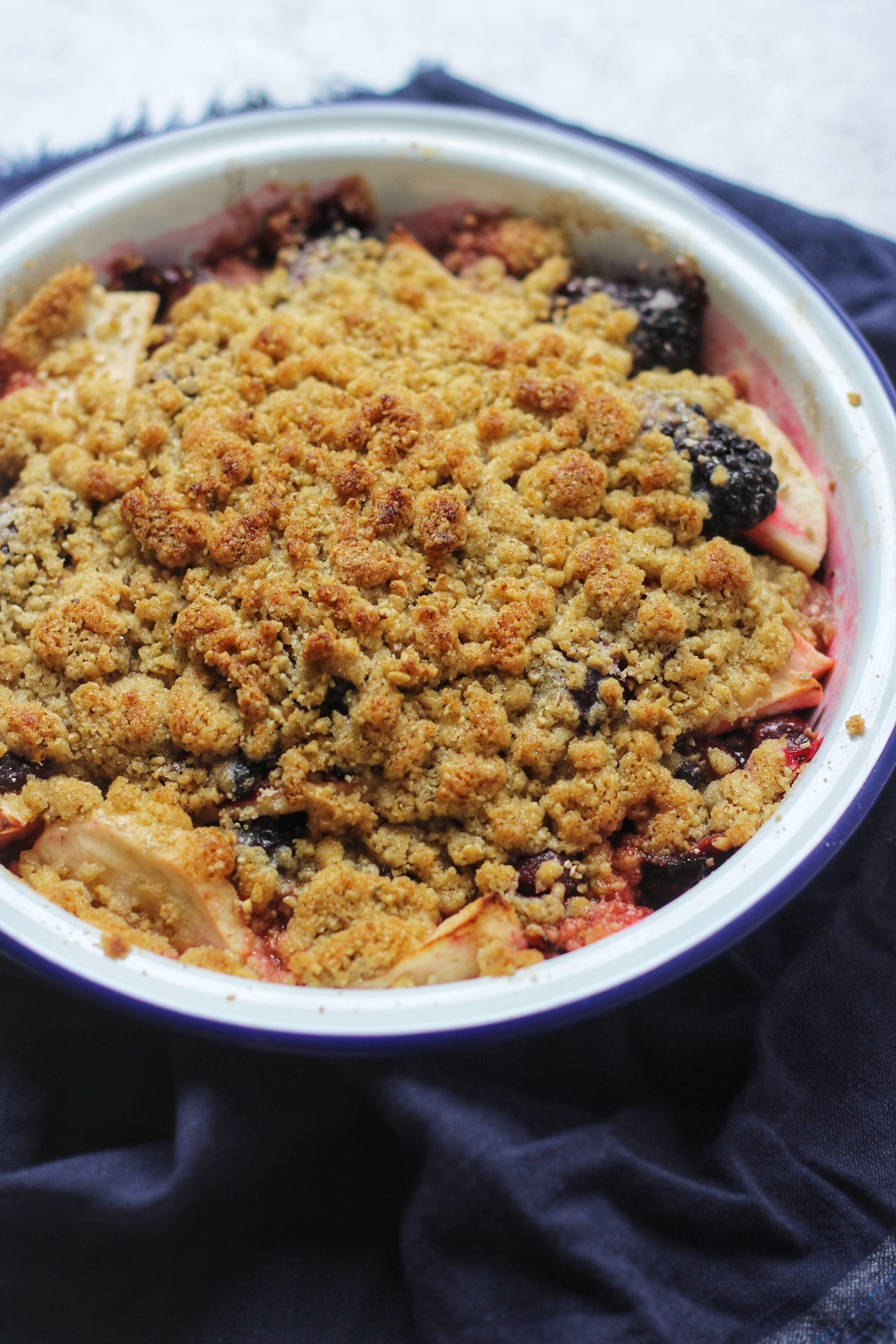
The recipe
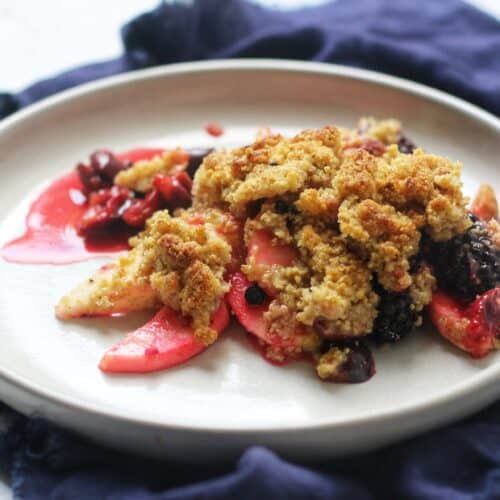
Hedgerow Crumble
Ingredients
For the fruit filling
- 750 g apples
- 250 g blackberries
- 250 g sloes, bullaces or damsons
- 100 g elderberries
- 2 teaspoon cornflour
- 150 g caster sugar
For the crumble top
- 100 g plain flour
- 100 g oatmeal
- 150 g butter chilled and cut into cubes
- 100 g demerera sugar
Instructions
- Heat the oven to 190 C/375 F/gas 5.
- Peel, quarter and core the apples, then thinly slice them into a large mixing bowl.
- Stone the bullaces and remove the elderberries from the stems. Add these to the apple slices along with the blackberries and mix together.
- Mix the cornflour with the caster sugar.
- Layer the fruit in an oven dish and sprinkle with the cornflour and sugar mixture.
- In the meantime, add the flour and salt to a mixing bowl, add the cubes of butter and rub the mixture together until it resembles breadcrumbs (or pulse in a food processor).
- Once it is making pea sized clumps, add in the demerera sugar.
- Spoon the crumble mixture in an even layer over the top of the fruit.
- Bake for 45 minutes until the crumble topping is golden brown and crisp, and the fruit is soft and their juices bubbling.
- Take the crumble out of the oven and let it rest. Serve warm.
Nutrition
More crumble recipes
More dessert recipes
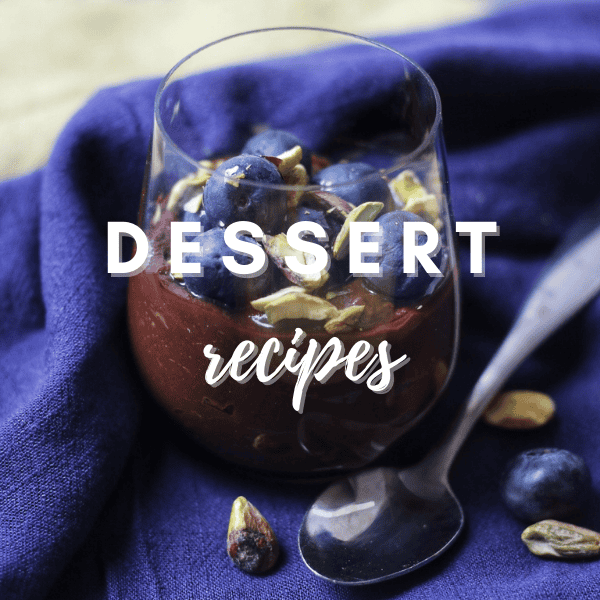
Check out the full range of pudding recipes in my Dessert Recipe Archive.

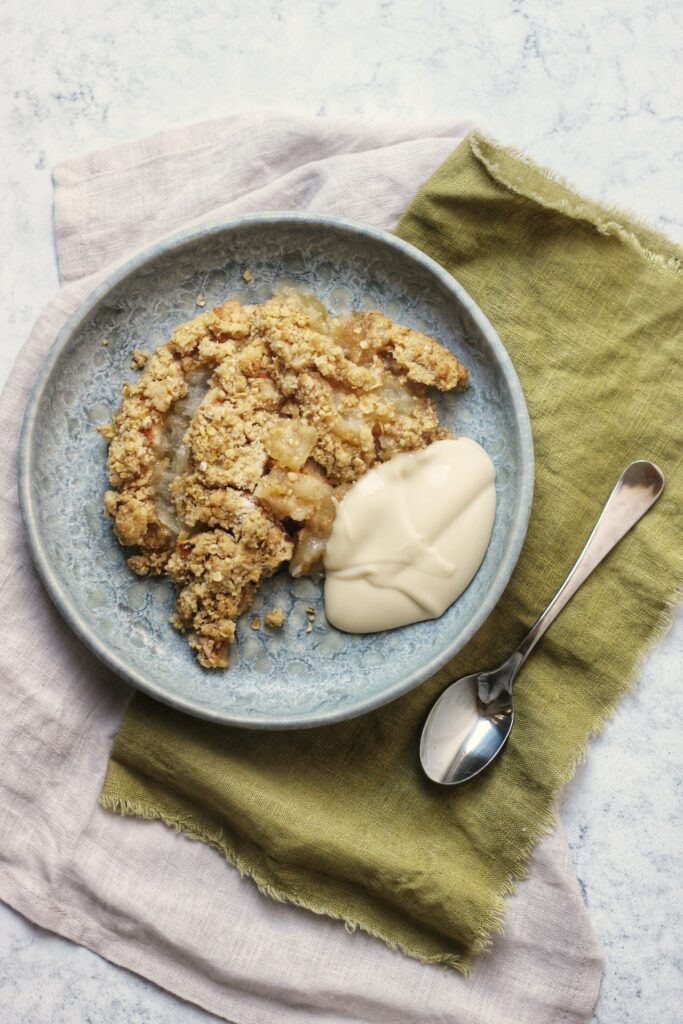
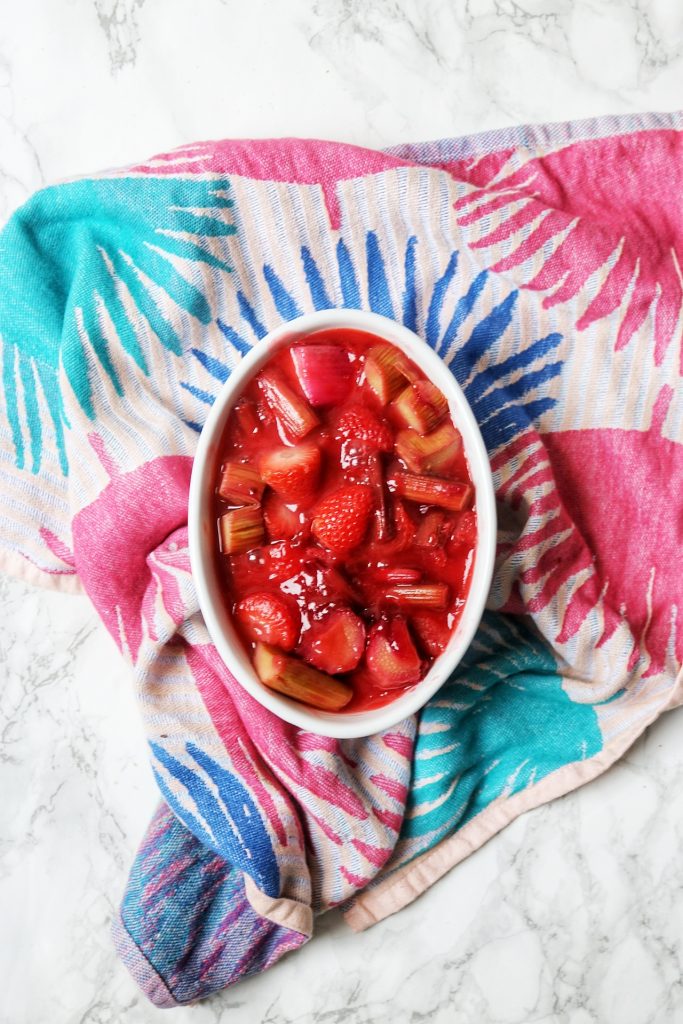
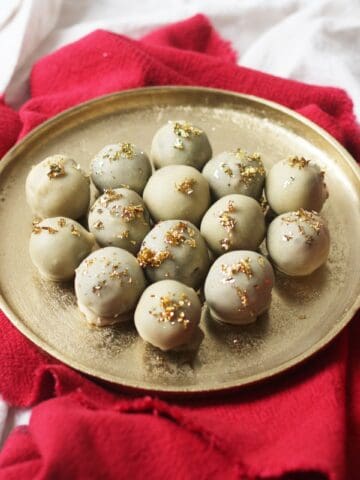
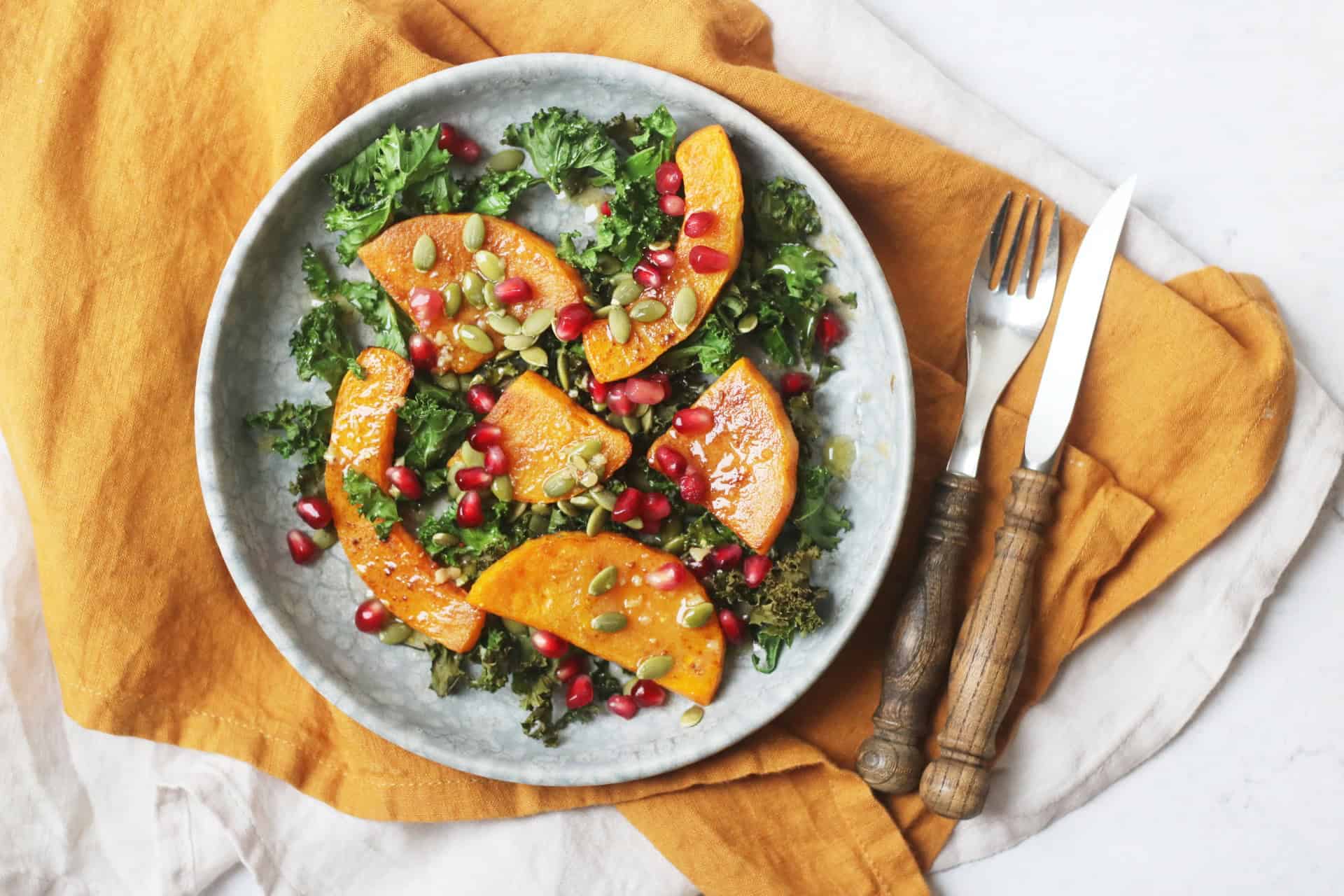
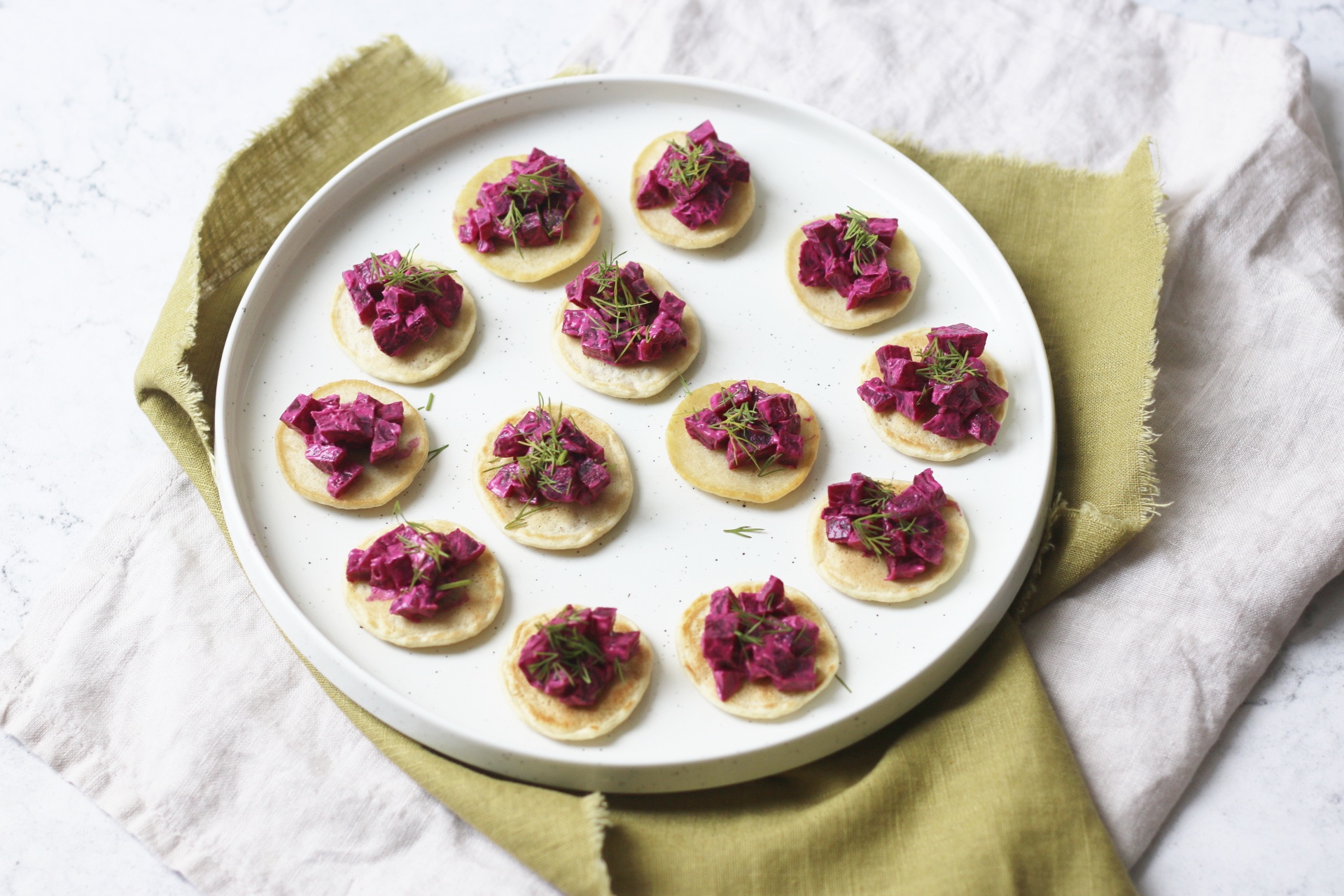
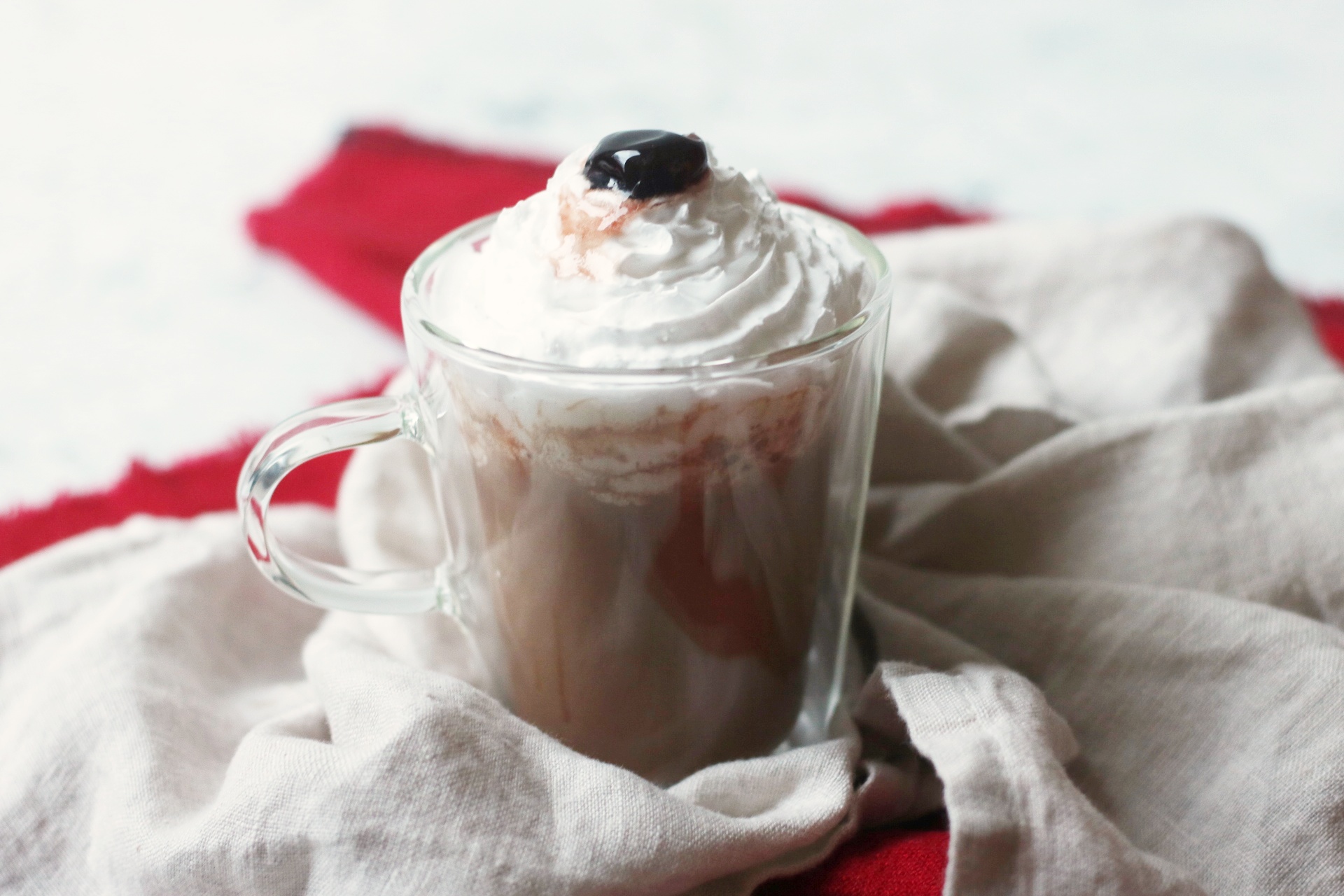
Leave a Reply